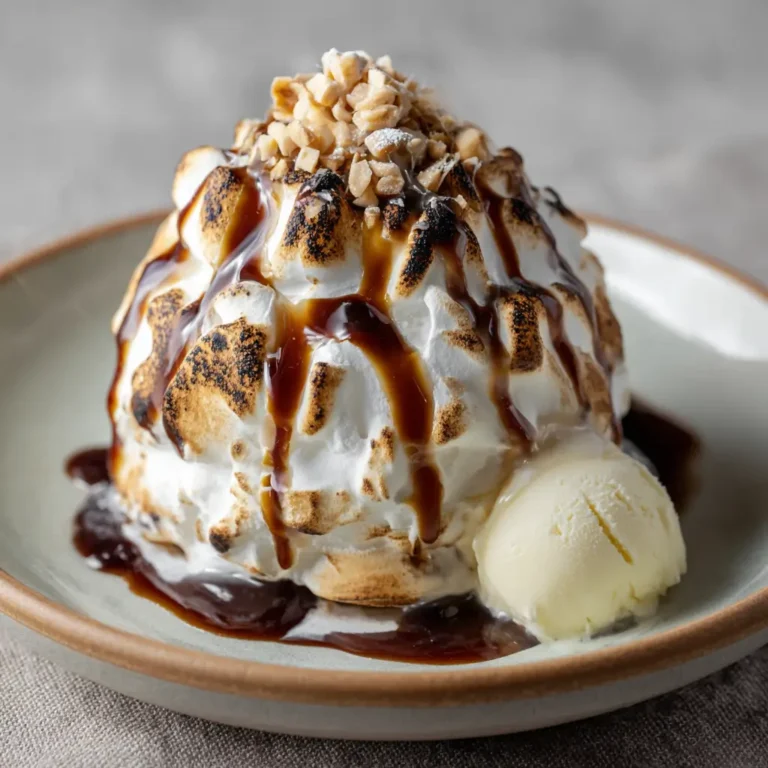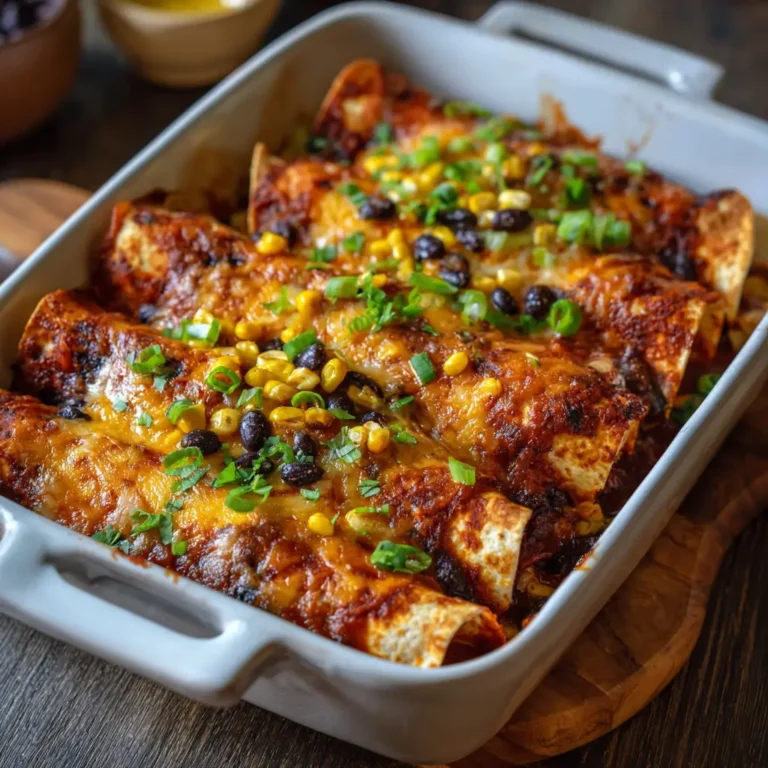Gnocchi with Tomato Basil
Gnocchi with Tomato Basil: A Comforting Italian Classic
There’s something undeniably comforting about a warm plate of soft, pillowy gnocchi smothered in a vibrant tomato basil sauce. This beloved dish brings together the rustic charm of Italian home cooking with bright, fresh flavors that delight the palate. Whether served as a main course or a hearty side, Gnocchi with Tomato Basil is a timeless favorite that transcends generations and borders. In this comprehensive guide, we’ll dive deep into the history, ingredients, techniques, variations, and nutritional aspects of this delicious recipe—so you can recreate it perfectly in your own kitchen.
The History of Gnocchi with Tomato Basil
The roots of gnocchi stretch back centuries across Italy, where regional variations reflect local ingredients and culinary traditions. While the exact origin of gnocchi remains debated, many food historians believe these small dumplings evolved from ancient Roman gnocchi di semolino, made from semolina and water. Over time, particularly during the 17th and 18th centuries, potato-based gnocchi became popular in Northern Italy—especially in regions like Piedmont and Lombardy—as potatoes gained acceptance in European diets after their introduction from the Americas.
Tomato sauce, on the other hand, entered Italian cuisine much later. Though tomatoes were brought to Europe by Spanish explorers in the 16th century, they were initially viewed with suspicion and considered poisonous. It wasn’t until the 18th century that tomatoes became widely accepted in Southern Italy, eventually forming the base of what we now know as marinara and pomodoro sauces. The combination of tender potato gnocchi with a rich, herb-laced tomato sauce likely emerged in the 19th century as culinary techniques and ingredient availability converged.
Today, Gnocchi with Tomato Basil stands as a symbol of Italian comfort food—a harmonious blend of humble ingredients elevated by technique and tradition. It’s commonly enjoyed on Thursdays in some Italian households (a nod to the old saying “gnocchi on Thursday, pasta on Sunday”), though it’s now a year-round favorite in homes and restaurants worldwide.
Ingredients Breakdown
The beauty of Gnocchi with Tomato Basil lies in its simplicity and reliance on high-quality ingredients. Each component plays a vital role in creating a balanced, flavorful dish. Let’s explore them in detail:
- Potatoes: The foundation of traditional gnocchi. Russet or Yukon Gold potatoes are preferred for their high starch content and creamy texture when cooked. They should be baked rather than boiled to minimize moisture absorption, which ensures light and airy gnocchi.
- Flour: Used to bind the dough. All-purpose flour is standard, but some chefs use “00” flour for a silkier texture. The amount varies depending on the potato moisture, so it’s best added gradually.
- Egg: Acts as a binder and adds richness. One large egg is typically sufficient for two medium potatoes.
- Salt and Nutmeg: Essential seasonings. Salt enhances flavor throughout, while a pinch of nutmeg adds warmth and depth without overpowering.
- Olive Oil: High-quality extra virgin olive oil is used both in the sauce and sometimes brushed on baked potatoes to preserve moisture.
- Garlic: Fresh garlic cloves are sautéed gently to infuse the sauce with aromatic depth without becoming bitter.
- Canned Tomatoes: Whole San Marzano tomatoes are ideal due to their sweetness, low acidity, and thick flesh. Crushed by hand for a rustic texture, they form the soul of the sauce.
- Fresh Basil: Added at the end for a burst of herbal freshness. Its volatile oils give the dish a fragrant lift.
- Sugar (optional): A small pinch may be added to balance the acidity of the tomatoes, especially if they’re not perfectly ripe.
- Cheese (Parmigiano-Reggiano or Pecorino Romano): Grated over the top before serving for umami and saltiness. Vegan alternatives like nutritional yeast can be used for dairy-free versions.
- Red Pepper Flakes (optional): For those who enjoy a hint of heat, a dash adds complexity without overwhelming the dish.
Step-by-Step Recipe
Part 1: Making Homemade Gnocchi
- Preheat oven to 400°F (200°C). Wash two large russet potatoes thoroughly and pierce them with a fork. Place directly on the oven rack and bake for 45–60 minutes, or until very tender when pierced with a knife. Remove and let cool slightly.
- Peel the potatoes while still warm. Use a paring knife or your fingers (carefully) to remove the skin. Pass the hot potato flesh through a ricer or food mill into a large bowl. Do not use a blender or food processor, as this releases too much starch and makes the dough gummy.
- Sprinkle with salt and nutmeg. Add 1/2 teaspoon salt and a pinch of freshly grated nutmeg. Mix gently with a spatula.
- Add the egg. Beat one large egg lightly and pour it over the potatoes. Fold in gently just until combined.
- Incorporate flour gradually. Begin adding all-purpose flour, about 1/4 cup at a time, mixing with your hands until the dough comes together. You may need between 1/2 to 3/4 cup total. Stop adding flour once the dough is soft, slightly tacky, but not sticky.
- Knead lightly. Turn the dough onto a floured surface and knead briefly—about 30 seconds—just to smooth it out. Over-kneading leads to tough gnocchi.
- Divide and roll into ropes. Cut the dough into four pieces. Roll each piece into a long rope about 3/4 inch thick.
- Cut into small pieces. Use a knife or bench scraper to cut each rope into 1-inch segments.
- Shape the gnocchi (optional). To create the classic ridged look, roll each piece over the tines of a fork, pressing lightly with your thumb to create a slight curve and grooves. This helps the sauce cling better.
- Place on a floured tray. Arrange shaped gnocchi on a baking sheet dusted with flour. Cover loosely with a towel and set aside while preparing the sauce. If not cooking immediately, refrigerate for up to 2 hours or freeze for later use.
Part 2: Preparing the Tomato Basil Sauce
- Heat olive oil in a skillet. In a large, deep skillet or saucepan, warm 3 tablespoons of extra virgin olive oil over medium heat.
- Sauté garlic and optional aromatics. Add 2–3 minced garlic cloves (and a pinch of red pepper flakes, if desired). Cook for 1–2 minutes until fragrant but not browned.
- Add tomatoes. Pour in one 28-ounce can of whole peeled San Marzano tomatoes. Crush them with your hands as you add them, or use a wooden spoon to break them up in the pan.
- Season the sauce. Stir in 1/2 teaspoon salt, a few grinds of black pepper, and a pinch of sugar (if needed). Bring to a gentle simmer.
- Cook down the sauce. Reduce heat to low and let the sauce bubble slowly for 20–25 minutes, stirring occasionally, until thickened and richly flavored.
- Add fresh basil. Tear 1/2 cup of fresh basil leaves and stir into the sauce during the last 5 minutes of cooking. Reserve a few leaves for garnish.
Part 3: Cooking and Combining
- Boil the gnocchi. Bring a large pot of salted water to a rolling boil. Working in batches, drop the gnocchi into the water. They will sink and then float to the surface in 1–2 minutes when cooked.
- Remove with a slotted spoon. Transfer the floating gnocchi directly into the simmering tomato sauce.
- Toss gently. Stir the gnocchi into the sauce and cook together for an additional 1–2 minutes to coat and absorb flavor.
- Finish and serve. Remove from heat. Drizzle with a little more olive oil, sprinkle generously with freshly grated Parmigiano-Reggiano, and garnish with reserved basil leaves.
Tips for Perfect Gnocchi with Tomato Basil
- Use dry, starchy potatoes. Moisture is the enemy of good gnocchi. Baking instead of boiling ensures drier potatoes, leading to lighter dumplings.
- Rice the potatoes while hot. This prevents lumps and allows even mixing with flour and egg.
- Don’t overwork the dough. Excessive kneading activates gluten, making gnocchi chewy instead of tender.
- Flour sparingly. Too much flour makes gnocchi dense. Add only enough to bring the dough together.
- Simmer, don’t boil, the sauce. Slow cooking develops deeper flavor and prevents splattering.
- Reserve pasta water (if using store-bought). When using packaged gnocchi, save a cup of the cooking water to adjust sauce consistency if needed.
- Add cheese at the end. Melting cheese into the sauce can make it grainy. Always sprinkle it on top just before serving.
- Freeze extras. Uncooked gnocchi can be frozen on a tray, then transferred to a bag for up to 3 months. Cook straight from frozen—no thawing required.
- Use fresh basil at the end. Adding basil early causes it to lose aroma and turn black. Stirring it in at the end preserves its color and fragrance.
- Balance acidity. Taste the sauce before serving. If it’s too sharp, add a tiny pinch of sugar or a splash of cream for roundness.
Variations and Customizations
Gnocchi with Tomato Basil is wonderfully adaptable. Here are several ways to personalize the dish to suit different tastes, dietary needs, or seasonal availability:
- Creamy Tomato Basil Gnocchi: Stir in 1/4 to 1/2 cup of heavy cream, mascarpone, or ricotta at the end for a richer, silkier sauce.
- Roasted Garlic Version: Replace raw garlic with 4–5 cloves of roasted garlic, mashed into a paste and blended into the sauce for a sweeter, mellow flavor.
- Vegan Gnocchi: Omit the egg and use vegan butter or flaxseed meal as a binder. Serve with a cashew-based “cheese” or nutritional yeast topping.
- Gluten-Free Gnocchi: Substitute regular flour with a gluten-free blend (tapioca starch, rice flour, xanthan gum), or try gnocchi made from cauliflower or ricotta.
- Protein-Packed: Add cooked Italian sausage, grilled chicken, shrimp, or plant-based crumbles for a heartier meal.
- Veggie Boost: Fold in sautéed mushrooms, spinach, zucchini, roasted bell peppers, or sun-dried tomatoes for added texture and nutrition.
- Pesto Swirl: Stir a tablespoon of basil pesto into the tomato sauce for a dual-layered herbal profile.
- Seafood Twist: Use cherry tomatoes, white wine, and clams or mussels for a coastal-inspired variation.
- Baked Gnocchi: Combine cooked gnocchi and sauce in a baking dish, top with mozzarella and Parmesan, and bake until bubbly and golden—essentially a gnocchi al forno.
- Spicy Arrabbiata Style: Increase red pepper flakes and add a splash of red wine to the sauce for a bold, fiery kick.
Health Considerations and Nutritional Value
While Gnocchi with Tomato Basil is undeniably comforting, understanding its nutritional profile can help you enjoy it mindfully. Here’s a breakdown per typical serving (approx. 1.5 cups with homemade gnocchi and sauce):
- Calories: ~450–550 kcal
- Carbohydrates: ~70–80g (mainly from potatoes and flour)
- Protein: ~10–12g (from egg, cheese, and tomatoes)
- Fat: ~15–20g (mostly healthy monounsaturated fats from olive oil)
- Fiber: ~5–6g (from tomatoes, basil, and potatoes with skin)
- Sodium: ~600–800mg (can be reduced by using low-sodium tomatoes and less cheese)
- Vitamins & Minerals: Rich in vitamin C (tomatoes, basil), potassium (potatoes), vitamin K (basil), and antioxidants like lycopene.
Health Tips:
- Portion Control: Gnocchi is dense and satisfying—smaller portions go a long way.
- Boost Fiber: Use whole wheat flour in the dough or mix in pureed cauliflower or pumpkin for added nutrients and lower glycemic impact.
- Reduce Fat: Limit added cheese and use less olive oil without sacrificing flavor.
- Lower Sodium: Choose no-salt-added canned tomatoes and control salt during cooking.
- Dairy-Free Options: Skip cheese or use plant-based alternatives to accommodate lactose intolerance or vegan diets.
- Balanced Meal: Serve with a crisp green salad or steamed vegetables to increase fiber and micronutrient intake.
Though traditionally carb-heavy, this dish can be adapted to fit various dietary lifestyles—from keto (using almond-flour gnocchi) to Mediterranean (rich in olive oil, vegetables, and herbs)—making it a versatile option for health-conscious eaters.
Ingredients
For the Gnocchi:
- 2 large russet potatoes (about 1 lb / 450g)
- 1 large egg, lightly beaten
- 1/2 to 3/4 cup all-purpose flour (plus extra for dusting)
- 1/2 teaspoon fine sea salt
- Pinch of freshly grated nutmeg
For the Tomato Basil Sauce:
- 3 tablespoons extra virgin olive oil
- 2–3 garlic cloves, minced
- 1 (28 oz) can whole peeled San Marzano tomatoes
- 1/2 teaspoon salt (or to taste)
- Freshly ground black pepper, to taste
- Pinch of sugar (optional)
- 1/2 cup fresh basil leaves, torn (plus extra for garnish)
- Pinch of red pepper flakes (optional)
To Serve:
- Freshly grated Parmigiano-Reggiano or Pecorino Romano
- Extra drizzle of olive oil
Directions
- Bake the potatoes: Preheat oven to 400°F (200°C). Pierce potatoes and bake directly on the rack for 45–60 minutes until tender. Cool slightly, then peel.
- Rice the potatoes: Press hot potato flesh through a ricer into a large bowl. Sprinkle with salt and nutmeg.
- Mix dough: Add beaten egg and mix gently. Gradually incorporate flour until dough forms. Knead lightly on a floured surface for 30 seconds.
- Shape gnocchi: Roll dough into ropes, cut into 1-inch pieces, and shape with a fork if desired. Place on a floured tray.
- Make the sauce: Heat olive oil in a skillet. Sauté garlic and red pepper flakes for 1 minute. Add crushed tomatoes, salt, pepper, and sugar. Simmer 20–25 minutes.
- Add basil: Stir in torn basil leaves during the last 5 minutes of cooking.
- Cook gnocchi: Bring salted water to a boil. Cook gnocchi in batches; remove when they float (1–2 minutes).
- Combine: Transfer cooked gnocchi to the sauce. Toss gently and heat through for 1–2 minutes.
- Serve: Plate immediately. Top with grated cheese, fresh basil, and a drizzle of olive oil.
FAQ
Can I use store-bought gnocchi?
Absolutely! Many high-quality refrigerated gnocchi brands are available in supermarkets. Simply follow package instructions for boiling, then toss with your homemade sauce.
Why did my gnocchi turn out mushy?
Mushiness usually results from overworking the dough, using wet potatoes, or adding too much flour. Ensure potatoes are baked and riced while hot, and use minimal flour.
Can I make gnocchi ahead of time?
Yes! Uncooked gnocchi can be refrigerated for up to 2 hours or frozen for 3 months. Cook directly from frozen, adding 30–60 seconds to boiling time.
Is gnocchi the same as pasta?
While often grouped with pasta, gnocchi are technically dumplings. They’re made primarily from potatoes and flour, unlike wheat-based pasta.
How do I prevent gnocchi from sticking?
Dust shaped gnocchi with flour and avoid overcrowding the pot when boiling. Stir gently once they begin to float.
Can I reheat leftover gnocchi?
Yes, but texture may change. Reheat gently in a skillet with a splash of water or broth to prevent drying. Avoid microwaving if possible.
What wine pairs well with this dish?
A light to medium-bodied red like Chianti or Sangiovese complements the tomato sauce. For white lovers, a crisp Pinot Grigio or Vermentino works beautifully.
Can I make this gluten-free?
Yes—use a gluten-free flour blend or try alternative gnocchi made from ricotta, cauliflower, or tapioca starch.
Summary
Gnocchi with Tomato Basil is a celebration of Italian culinary tradition—featuring soft, handmade potato dumplings bathed in a vibrant, herb-infused tomato sauce. Simple yet deeply satisfying, it’s a dish that brings comfort and elegance to any table.






